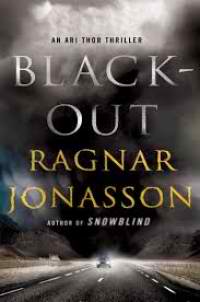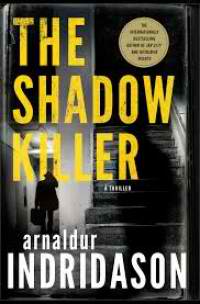The Girl Who Died by Ragnar Jónasson
 Friday, May 7, 2021 at 7:29AM
Friday, May 7, 2021 at 7:29AM 
Published in Iceland in 2018; published in translation by Minotaur Books on May 4, 2021
Multiple mysteries intersect in The Girl Who Died. What happened to the little girl who seems to be haunting the house where Una is staying? What caused the death of another little girl decades later? Why is Thór, despite his obvious attraction to Una, resisting any kind of relationship with her? Why is a woman serving time in prison for a murder she didn’t commit? Why is an entire village lying about seeing a man who appeared in the village after he vanished from Reykjavik? Why does nearly everyone in the village want Una to leave?
Una begins the novel in Reykjavik, where circumstances have conspired to make her unhappy. A friend shows her a notice for a teaching position in the remote fishing village of Skálar. Una applies and, by virtue of being the only applicant, is hired. The village only has two children, two girls who are not far apart in age. As part of Una’s compensation, she’s given an attic room in the house where one of the girls lives with her mother.
Arriving at the village after a long day of driving, Una finds the place where she’ll be staying. (It’s the first house she sees, but there aren’t many houses in a village that only has about ten residents.) As she approaches the front door, Una sees a child dressed in white peering at her from the window. She assumes the child is Edda, the child who lives in the house, but when she introduces herself, Edda denies having seen her from the window. We later learn that the villagers regard the house as haunted by the spirit of a girl who died decades earlier under circumstances that nobody wants to share with Una.
Much of the story develops Una’s sense of being an outsider. Apart from Edda’s mother, who insisted that the two village children needed a proper education, nobody wants Una to stay. Una reacts to her ostracization by drinking a bottle of wine most nights, which the village gossips — meaning nearly every villager — soon notice. One of the few villagers who is friendly to Una is Thór, a single man who lives in a platonic relationship with a woman. He makes Una feel even more lonely by politely resisting her advances for reasons he refuses to disclose.
Against that background, a plot gains ground when a man appears in the village. He tells Una he is looking for a particular residence where he heard he might be able to rent a room for the night. Days later, after Una learns that someone resembling the man has been reported missing from Reykjavik, she wonders why everyone in the village is denying knowledge of the man’s existence.
Compounding the mystery are chapters told from the perspective of a young woman in prison. She and two other people were convicted of murdering two victims whose bodies were never found. She confessed to the crime after the police convinced her of her guilt, but she has no memory of committing the murder. The book is nearing its end before we learn how the apparently innocent woman fits in with the other plot elements.
The notice for the teaching job describes the village’s location as “the end of the world.” It seems that way to Una. Her sense of isolation, loneliness, and self-doubt is amplified by the bleakness of the landscape in which Ragnar Jónasson set the story. The atmosphere gives the novel an eerie feeling, while Una’s reaction to living at the end of the world makes her a sympathetic character.
The Girl Who Died blends a multifaceted mystery plot with elements of the supernatural. I’m not a big fan of the supernatural, but whether the ghost is real or the byproduct of Una’s anxiety, perhaps combined with her alcohol consumption, is ambiguous for much of the novel. The sense of living in a haunted place does add to Una’s distress, so the ghost, real or imagined, contributes to the story. A reader may need to suspend belief in the supernatural to appreciate the last brief chapters.
The story raises intriguing moral issues that I can’t discuss without revealing the novel’s secrets. Doing the right thing for one person will harm another person, creating the kind of a moral dilemma that makes the reader think about how the reader might respond to the same situation. Whether Una makes the right choice is certainly open to debate, but I regard that as a good thing. A surprising conclusion resolves the story elements in way that is true to the novel’s macabre tone. I’ve only read a few of Jónasson’s novels, but I’ve read enough to know that he’s a skilled mystery writer.
RECOMMENDED
 TChris |
TChris |  Post a Comment |
Post a Comment |  Iceland,
Iceland,  Ragnar Jónasson in
Ragnar Jónasson in  Thriller
Thriller 


